The Apple iPhone 11, 11 Pro & 11 Pro Max Review: Performance, Battery, & Camera Elevated
by Andrei Frumusanu on October 16, 2019 8:30 AM ESTDisplay Measurement
When it comes to displays, last year's iPhone XS didn’t showcase any major display changes compared to the original iPhone X, as the two phones seemingly shared the same display panel. In contrast to that situation, for the new iPhone 11 Pros, Apple is advertising using a newer generation panel which brings notable improvements with it.
In terms of dimensions or resolution, there’s no visible changes on the new panels, and you’d have to look under the hood to see what has actually changed. The most notable improvement this year is a switch in the OLED emitter material that’s been used by Samsung in producing the new screen. The new generation emitter was first introduced in the display panel of the Galaxy S10, and to my knowledge it has subsequently only been used in the Note10 series as well as the new OnePlus 7T (regular version only). The iPhone 11 Pro phones now join this limited group of devices, and the biggest improvements to the user experience will be higher maximum brightness levels as well as improved power efficiency.
The regular iPhone 11, on the other hand does not seem to have changed much from the iPhone XR. It remains a relatively lower resolution LCD screen, although its display characteristics remain excellent.
We move on to the display calibration and fundamental display measurements of the iPhone 11 screens. As always, we thank X-Rite and SpecraCal, as our measurements are performed with an X-Rite i1Pro 2 spectrophotometer, with the exception of black levels which are measured with an i1Display Pro colorimeter. Data is collected and examined using SpectraCal's CalMAN software.

In terms of maximum brightness, Apple has advertised that the new iPhone 11 Pro’s can reach up to 800nits of brightness displaying regular content. We’re able to verify this, as our 11 Pro Max sample reached 807 nits while the 11 pro reached 790 nits. Consequently, it’s quite odd to see that the LCD-based iPhone 11 is now the lowest brightness device in the line-up. As always, Apple doesn’t make use of any brightness boost mechanism and thus allows its peak brightness to be achieved in any scenario.
Apple also advertises that the screen does go up to 1200 peak brightness in HDR content, however I haven’t been able to go ahead to verify this in our current test suite.
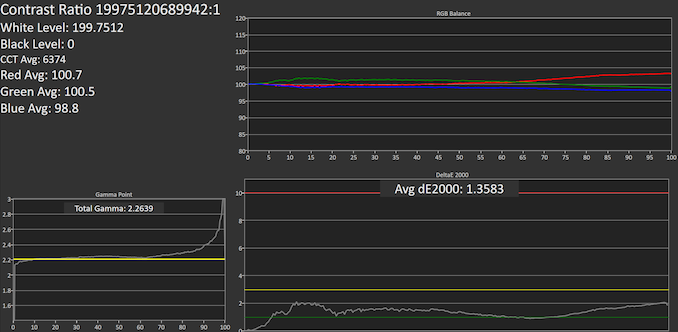
SpectraCal CalMAN
iPhone 11:
iPhone 11 Pro:
iPhone 11 Pro Max:
In the greyscale tests, all the iPhones perform extremely well, as expected. The Pro models do showcase a tendency to have slightly too strong red levels, so their color temperature is ever so slightly too warm. This characteristic diminishes the higher in brightness we go on the Pro models. The iPhone 11 has a weakness in the greens, so its color temperature is a above the 6500K white point target.
Gamma levels are excellent and target levels of 2.2. The Pro models are veering off towards higher gamma at higher picture levels, something that isnt as prominently exhibited by the iPhone 11. I’m not sure if this is due to a non-linear APL compensation of the phone screen during our measurement patterns, or if there’s an actual issue of the calibration.

iPhone 11 / SpectraCal CalMAN
iPhone 11 Pro / SpectraCal CalMAN
iPhone 11 Pro Max / SpectraCal CalMAN

The dE2000 deviation scores for the Pro models this year are slightly worse than what we saw in last year’s XS devices, however it’s still firmly among the best in class devices out there in the market, and you’d be hard pressed to perceive the small deviations. The iPhone 11 oddly enough does fare a bit worse off than the iPhone XR due to the larger deviations in color balance.
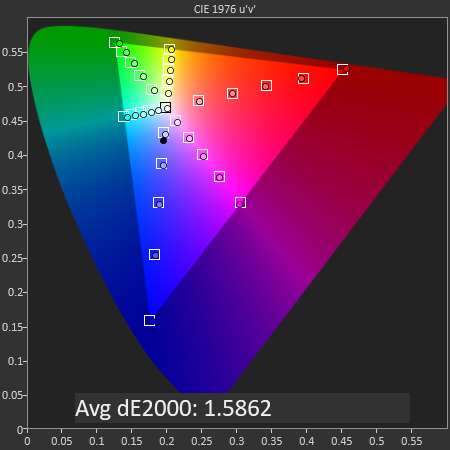
iPhone 11 / SpectraCal CalMAN
In the sRGB color space (default device content), the iPhone 11 performs extremely well with only minor shifts in hue in the greens.
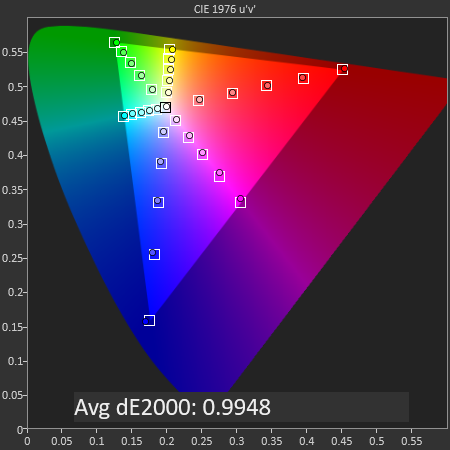
iPhone 11 Pro / SpectraCal CalMAN
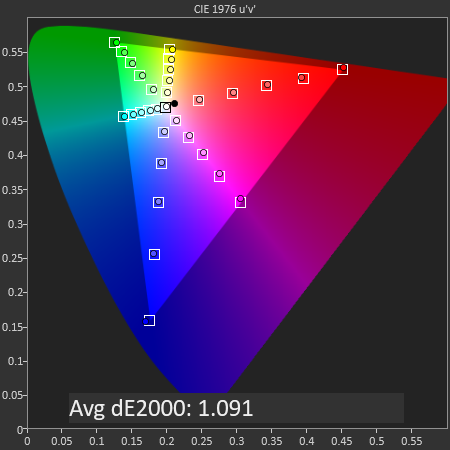
iPhone 11 Pro Max / SpectraCal CalMAN
In the same test, both the Pro models are showcasing exemplary accuracy.

The Pro models are just a bit worse off than the XS models of last year, but again these are among the most accurate displays you’ll find out there – mobile devices or not. The iPhone 11 is still excellent, although showing a bit larger deviation compared to the XR.
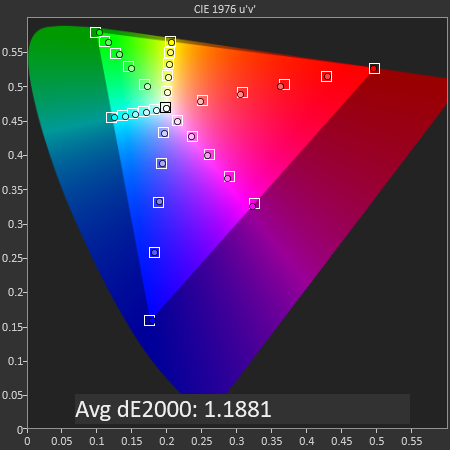
iPhone 11 / SpectraCal CalMAN
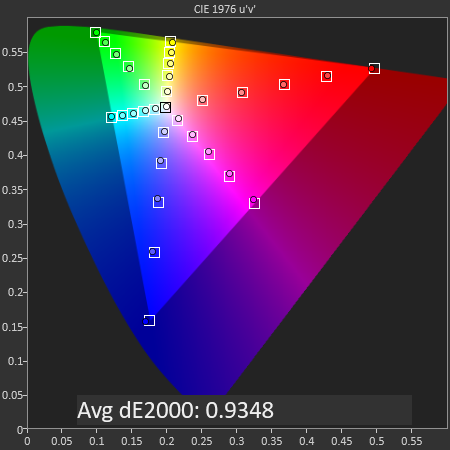
iPhone 11 Pro / SpectraCal CalMAN
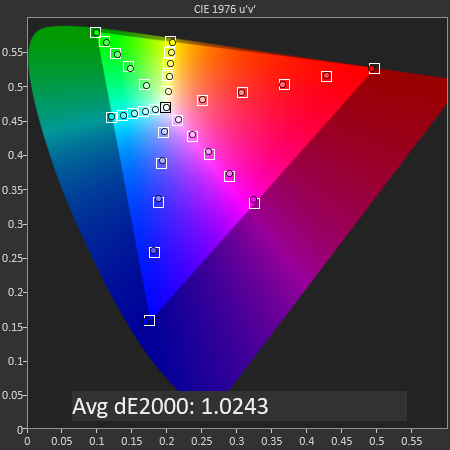
iPhone 11 Pro Max / SpectraCal CalMAN
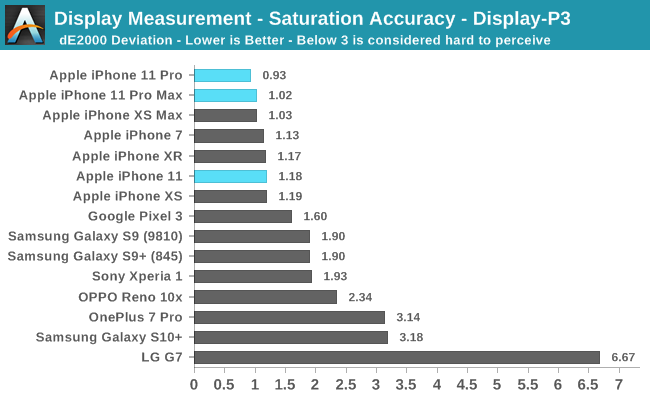
For Display P3 content, the iPhone 11 Pro models showcase the best saturation accuracies we’ve ever measured on any display. This time around, the iPhone 11 is in line with the XR.
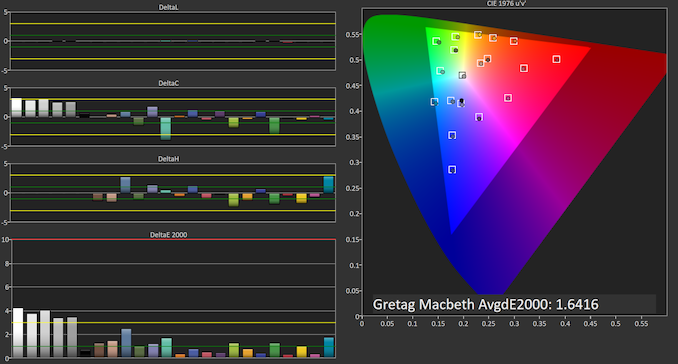

iPhone 11 / SpectraCal CalMAN
In the Gretag-MacBeth test of common tones, the only real issue of the iPhone 11 is the whites which had showcased a weakness of greens. Notice how the luminosity of the tones are essentially absolutely perfect.


iPhone 11 Pro / SpectraCal CalMAN
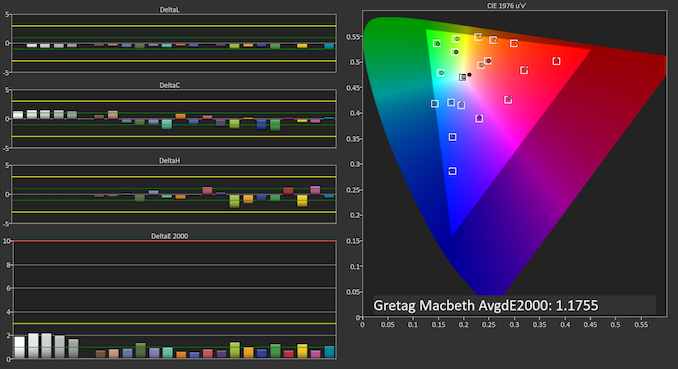

iPhone 11 Max Pro / SpectraCal CalMAN

Overall in terms of the color calibration and screen quality, the iPhones are the very best in the industry. There’s really nothing I can say about them as they’re class-leading in every regard.
The iPhone 11’s LCD screen isn’t for my taste due to the lower resolution, which frankly does bother me, and it certainly doesn’t have the same contrast characteristics as the Pro models. So while colors are still extremely good, it remains a compromise in 2019 when essentially every manufacturer has moved on to adopt OLED screens.
Display Power Measurements - Generational Improvements
Naturally, we didn’t want to finish the display evaluation section without verifying Apple’s claims about the new improved power efficiency of the iPhone 11 Pro panels.
Comparing the three generations of identical format iPhones, we again see that the display power consumption between the original iPhone X and the XS didn’t differ much at all. Plotting the new iPhone 11 Pro in the chart however we immediately see the difference in the new generation.
At equal brightness levels, Apple has indeed been able to improve the power efficiency of the panel by 15% - just as Apple’s marketing described it. We also see how the new panel expands past the brightness limits of the X and XS, reaching 800nits. This does come at a cost however, as the improved power efficiency isn’t able to completely make up for the larger brightness increase, so the maximum power consumption of the screen displaying full white does rise from 2.6W to 3.1W.


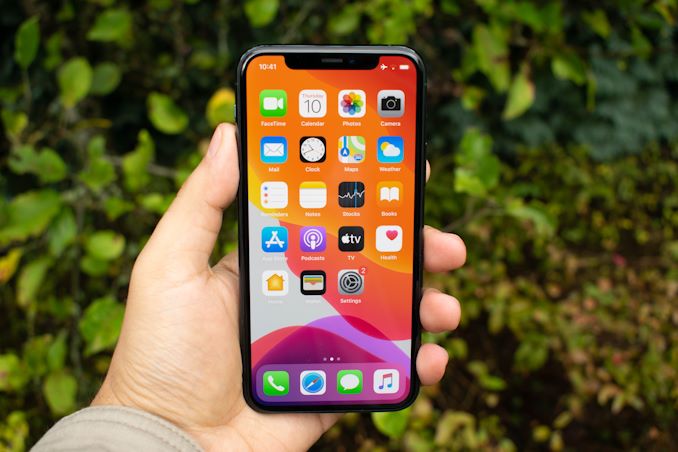









242 Comments
View All Comments
lmcd - Wednesday, October 16, 2019 - link
Dunno what this is supposed to mean. Given how well Qualcomm chips do with Windows and the superior performance of Apple vs Qualcomm, you're really just spouting nonsense.joms_us - Wednesday, October 16, 2019 - link
Where is superiority you say? These apps does what Spec or GB does and yet iPhone A11 is not showing desktop-level performance here versus OP7https://www.youtube.com/watch?v=Ic8q1kPseVE
It is even laughable that this iPhone 11 is not faster than the older iPhone XS
https://www.youtube.com/watch?v=i-P0KRlbH1M
If A13 is truly superior than some desktop processors, why are we not seeing/hearing anything it replacing processors inside MBP? I am sure Apple can port it easily to Windows or Linux if they wanted to.
lmcd - Wednesday, October 16, 2019 - link
Did you actually just link GUI/responsiveness hand-testing videos? Why do you think those add anything to the conversation? Arguing about the performance of a given GUI library tells us nothing about the SoCs involved.A13 is truly superior to some binnings of laptop-class processors running at nearly 10x its power consumption. That's why it or a larger version of it (a future A13X) will run in a future iPad Pro that should perform in the same class as the Surface Pro 7 and Surface Pro X.
Yea, it won't win versus the top models. But it'll certainly beat the lower-end Pro 7, with an anemic i3. And that includes single-core performance.
So yea, it wouldn't be the top desktop processor, but it certainly can and will scale up to "desktop-class performance." It doesn't scale up to a premium experience at a desktop level yet, so there's no place for it yet in the Apple desktop product stack.
Diogene7 - Wednesday, October 16, 2019 - link
On a personal basis, I am much more interested by 1. fanless computers and 2. responsiveness (latency) over raw peak performance for a future laptop or even desktop computer as I am mostly using my computer to surf the web / watch videos.That is the reason I really, really like the idea of Qualcomm 8cx processor as in the Samsung Galaxy book S : Quiet laptop (no fan), thin, light, excellent battery life... The unknow is responsiveness : will the performance be good enough that lag won’t be felt more than a standard Intel / AMD laptop ?
If the responsiveness of a Qualcomm 8cx / future Apple A14 is good enough, then a fanless laptop, but also a fanless desktop has much, much appeal to myself !!!
If I was Apple, I would try to introduce ARM mac computers with both an Apple A14 / Apple A15 in combination with Storage Class Memory (SCM) to get never seen before low latency (excellent responsiveness) fanless mac computers : sure it would maybe take more time to do some intensive tasks on those computers (ex: video editing), but basic day to day task (launching Safari,...) would feel soooo much faster (like using a SSD everything faster compare to a mechanical HDD).
WinterCharm - Wednesday, October 16, 2019 - link
ARM macs are coming in 2020.You will see these chips in a mac. With active cooling they are going to DESTROY anything Intel and AMD have to offer.
Alistair - Wednesday, October 16, 2019 - link
These tests we are looking at are occurring at 2.6Ghz for the A13. And it is basically equal to the 4Ghz+ 9900k. Imagine the A13 running at 3.5Ghz, I think it already surpasses Intel easily enough.joms_us - Wednesday, October 16, 2019 - link
Nonsense, show us proof or it did not happen. Even a mere 2Ghz Ryzen is faster than any smartphone today.Alistair - Wednesday, October 16, 2019 - link
The iPhone uses 2 fast cores. Yes, it is equal to a dual core Ryzen or a dual core Intel CPU. I want Intel to be faster, but that would have required them to do ANYTHING meaningful since the i7-2700k came out instead of just repackaging the same CPU over and over.WinterCharm - Thursday, October 17, 2019 - link
The proof is right on page 4 of this article, or did you not read it?joms_us - Wednesday, October 16, 2019 - link
Crossing my fingers, I will be happy even if I can just drag and file my files here and there or perhaps compile my x86 apps. =D